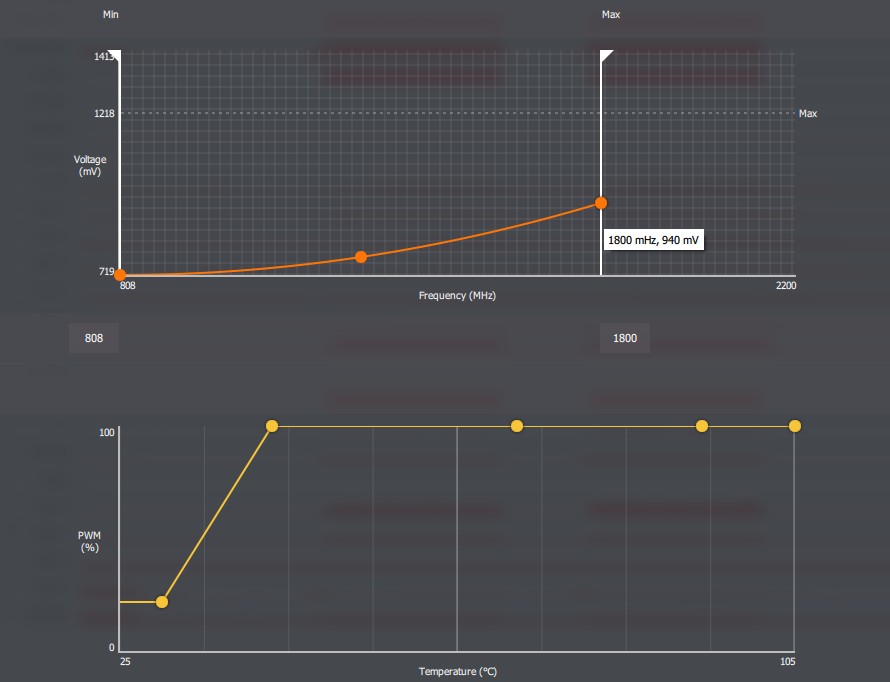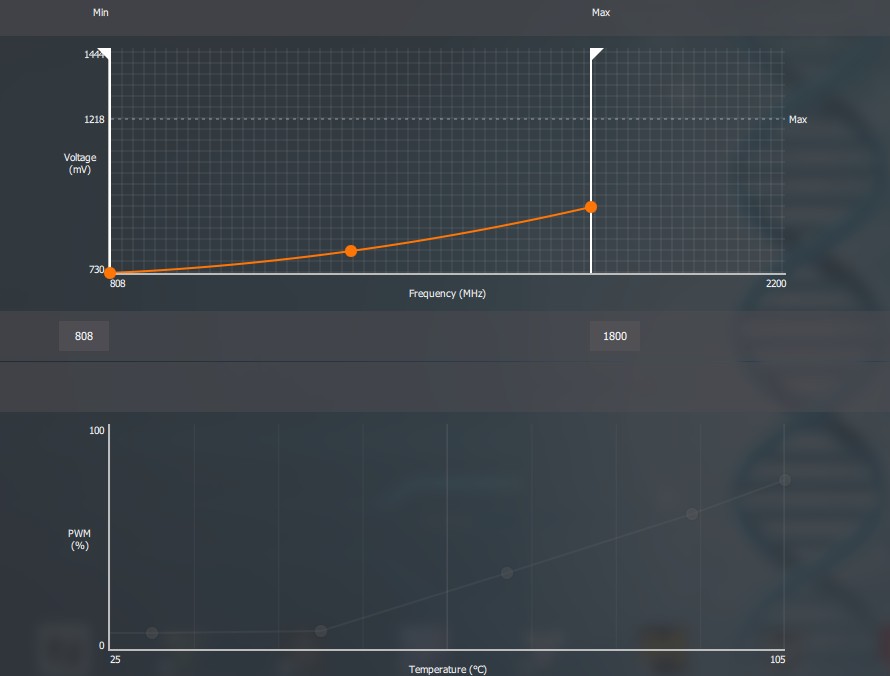Cooler (and faster) thanks to voltage reduction
It is an open secret that AMD likes to give out a few millivolts more (or too much) just to shine at the maximum utilization of the chips produced. However, almost all chips are mercilessly overfed with it. After all, it almost always works with much less. The consequences are sometimes astonishing, because the very generous watt anniversary becomes a rather reserved blackhead in the PC. Elegance instead of dominance at the socket, so to speak.
In this respect, you can even approach from two sides, because you can both maintain the performance and at the same time increase efficiency, as well as look for the sweetspot, which is far below what AMD sets off from the factory. Then the card (also acoustically) is almost tame. Of course, we want to look at both variants here and Gurdi has also devised a benchmark scene, which is becoming a good indicator of stability for the Radeon VII. Because no one has anything to do with a crash.
The settings are made in the Wattman and it is really to be hoped that the software will become even more stable. However, if you are not sure that the settings will be preserved, you will hear the loss of them. Because then the splendor is gone again. But: it has already gotten better and by and large everything is going as desired.
Gurdis Curve: Lower voltage and more aggressive fan curve for cards with "ghetto" mod
Here are Gurdi's presets, all of which have been tested for performance and long-term stability with the original card without modification, with the original Radeon VII becoming very noisy. But with ghetto mod on the cooler you hear almost nothing. The complete Wattman details can still be found in the picture gallery below.

The following gallery shows the results in detail and without wanting to spoil big: if you as the owner of a Radeon VII don't do it yourself, you really can't help it anymore. It is worth it. On the ears AND at the socket:
Igors Alternative: Lower voltage and automatic fan control
The voltage is set to 935 to 940 mV, but you like to play with it a little bit. If you're lucky like me, you'll get a little deeper. I left the second controller in the middle to 1304 MHz and 800 mV. This setting, like the one above, produces almost sensational results, as the next page will show. The settings look like Gurdi, but I left the fan to "automatic". If you want to, you can approach it a little more aggressively, but that is not really necessary.

Interestingly, the performance of quieter original fans is quite comparable to the full air pacifier, because 1759 MHz are also achieved. If the map runs cooler, as with Gurdis settings, 1766 MHz are already in it. Otherwise, however, the real benchmark results are almost identical. Compared to the original card, however, my settings are an exorbitant improvement in terms of fan speeds and volume development. We talk about the power consumption on the next page, because what has now been achieved is almost legendary.
Stability Test (Video)
Resident Evil 2 has proven to be particularly suitable for this, because when a setting is used in games such as Witcher 3, Wolfenstein II or Superposition or 3DMark was still running, then the chaff separates from the wheat at RE 2. Gurdi uses e.g. a scene from the beginning, whose savegame you created quickly. The video shows an example, but the underground car park would be used, for example. too.
- 1 - Vorwort zur RTG
- 2 - Untervolten mit dem Wattman leicht gemacht
- 3 - Leistungsaufnahme und Temperaturen mit Low Voltage Settings
- 4 - Lüfter-Umbau mit Originalkühler (Ghetto-Mod) und dem Raijintek Morpheus
- 5 - Erklärung und Hilfestellung zu den PowerPlay-Tabellen (PPT)
- 6 - Übertakten mit den PowerPlay Tabellen und Fazit











































Kommentieren